Insulation types: from sheep's wool to rigid board, which is right for your home?
Choosing between different home insulation types can be a minefield, but get it right and your reward will be a warmer home and lower energy bills. Discover which insulation material is best for your project with our essential guide
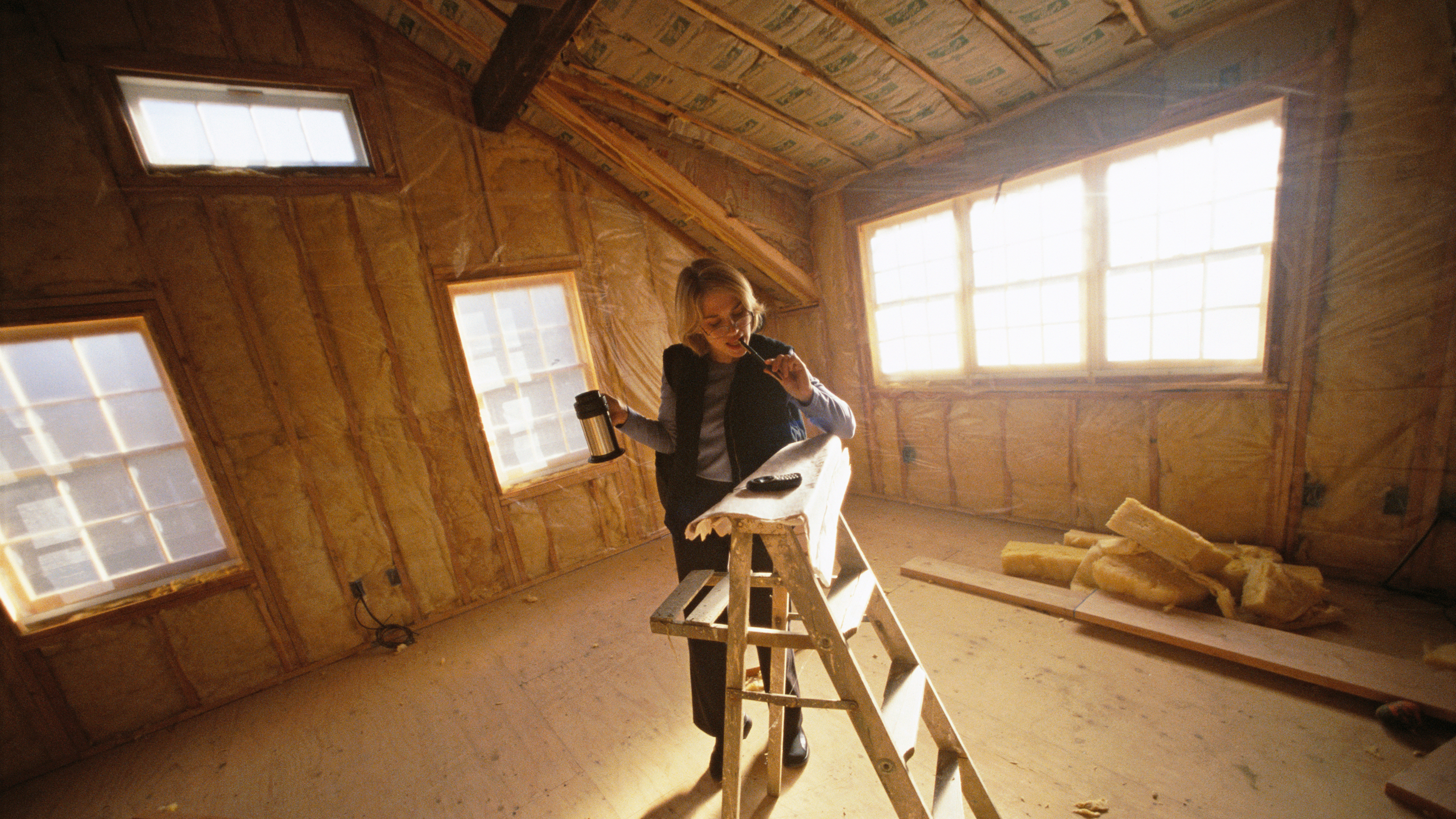
With so many different home insulation types on offer – from natural hemp and sheep's wool to spray-on foams and rigid insulation boards – choosing the right material for your home needs careful consideration. The type you use will depend on the part of the home you plan to insulate, any depth restrictions and also what is appropriate for your home's construction.
Read on to find out everything you need to know about choosing the right insulation type, as we explain the different materials available and their various applications. You might also want to check out our complete guide to insulating a house.
What is home insulation?
Insulating a house is one of the most important things you can do to reduce heating bills and make it feel cosy and comfortable, but before starting out, it’s important to understand the potential complexities of insulating an old building. The pitfalls of using inappropriate insulation materials or of them being installed incorrectly include damp and mould – these may be damaging to both your health and that of the building.
When adding insulation the aim is to improve the thermal performance of the building’s external envelope – in other words the roof, walls and floors. With this in mind, you must weigh up the pros and cons of insulating each element and to understand whether doing so is cost efficient, practical and right for the house.
Read our in-depth insulating guides to see how to insulate the following parts of your home:
- How to insulate a roof
- How to insulate cavity walls
- How to insulate floors
- Insulating a wall – best methods and materials for external and internal walls
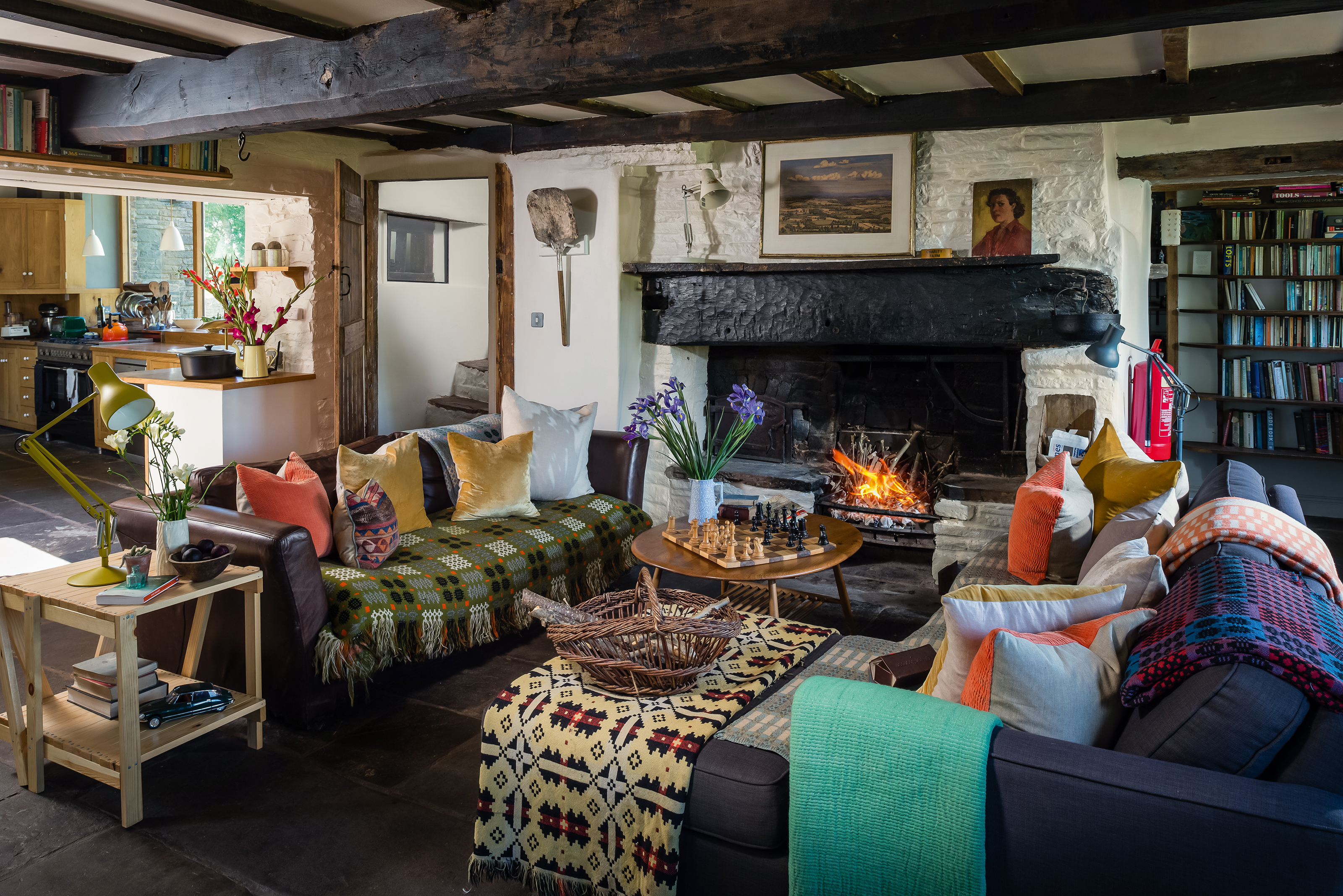
Choosing the right insulation types is critical to ensuring your home is warm and cosy
What is the best type of insulation for a home?
MORE FROM PERIOD LIVING
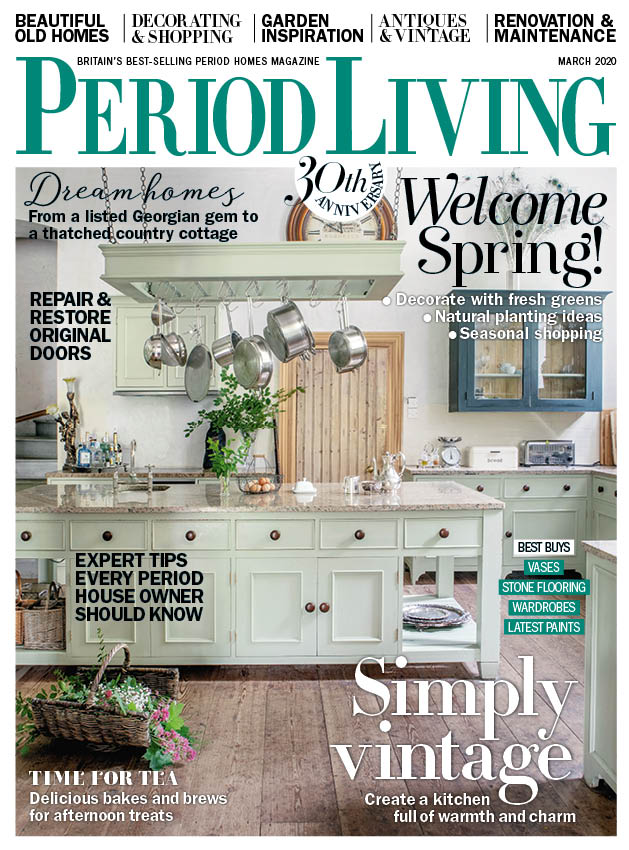
Get the best period home inspiration, ideas and advice straight to your door every month with a subscription to Period Living magazine
Rarely will one type of insulation material will provide the answer to insulating all parts of a house. Instead, a palette of different products is often required to suit the specific requirements of each situation.
When choosing wall or roof insulation think about each material’s compatibility with the building, its thermal performance, acoustic properties, ease of use, cost and what it’s made of.
Some materials are thin and highly insulating so are ideal where space is limited; others are cheaper but a greater thickness is required to achieve the equivalent level of thermal performance.
To help with comparisons, the thermal conductivity of a material is given as its lambda or k-value.
Insulation comes in all shapes and sizes ranging from rolls, batts and boards to loose-fill, aggregate and spray foam products, with each suited to different applications.
Thoroughly research products and systems and be sure you understand the consequences of installing insulation in an old building. Most suppliers of natural, breathable materials will offer advice; some will prepare a specification for an appropriate system.
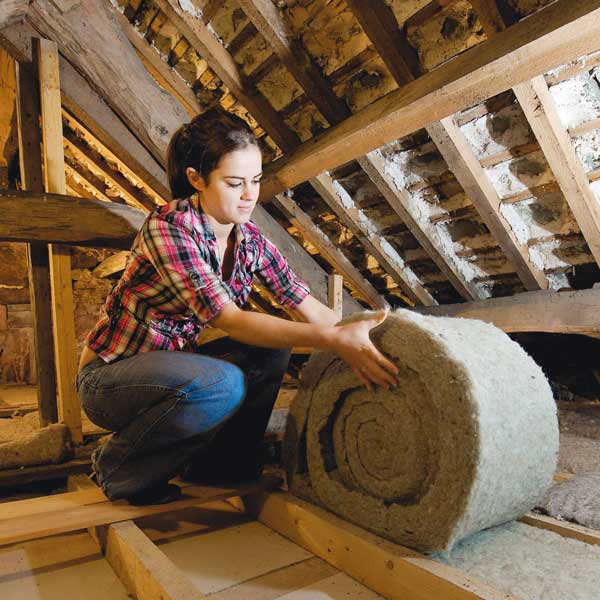
Sheep's wool insulation, such as Thermafleece, is natural, breathable and safe to handle
Where to buy insulation
Most insulation is available from your local builders' merchant. Some types for very old homes might only be sold by specialist suppliers. A good builder will be able to help your find the right materials for you. Otherwise, look at the wide range available online from these stores:
Sheep's wool insulation and other natural materials
Natural insulation products are breathable so tend to be particularly well suited to use in older buildings, are pleasant to use and have the least environmental impact.
- Sheep’s wool insulation, available in rolls and batts, is easy and pleasant to use. It is ideal for loft spaces and between timber studwork.
- Cellulose insulation is a loose-fill material, made from recycled newspaper. It is commonly used in loft space and can also be employed in studwork. It has the benefit of easily filling nooks and crannies but, in an excessively draughty loft space, may blow around.
- Recycled cotton fibre, used in a similar way to sheep’s wool, is available as rolls, batts and loose fill.
- Wood fibre is one of the most versatile insulation materials. It's sold in the form of loose fill, flexible batts and rigid boards. The board products come in varying dimensions and thicknesses and a wide product range is manufactured to suit a variety of situations, including external use on roofs and beneath lime render coats. Some wood fibreboards are tongued-and-grooved so they interlock, helping to achieve a higher degree of airtightness and acoustic insulation.
- Cork boards and loose-fill and aggregate product have a variety of uses and can be employed internally and externally. Cork aggregate is used in some insulating lime renders.
- Hemp, available as batts, offers good moisture buffering properties. Hemp shiv (the plant’s woody core) may be mixed with lime to make hempcrete, an insulating construction material that can form blocks or be cast in situ.
Mineral insulation products
Based on naturally occurring materials, some mineral insulation options contain recycled content.
- Aerogel is an incredibly efficient insulation material supplied in the form of an extremely thin blanket. It's made using silica gel, and is particularly useful where other insulation materials would be too thick, such as window reveals and in door panels,
but is comparatively expensive. - Foam glass aggregate is a closed-cell insulation product that does not absorb water, can be used under floors and around foundations.
- Calcium silicate is a board insulation material that is useful where moisture is a problem, such as single brick masonry and in basements.
- Stone mineral wool is supplied in a wide range of forms including blown, batt and roll. It maintains its shape, does not sag and is vapour permeable. Although it does not have the moisture buffering properties of natural products, it has superior resilience to fire.
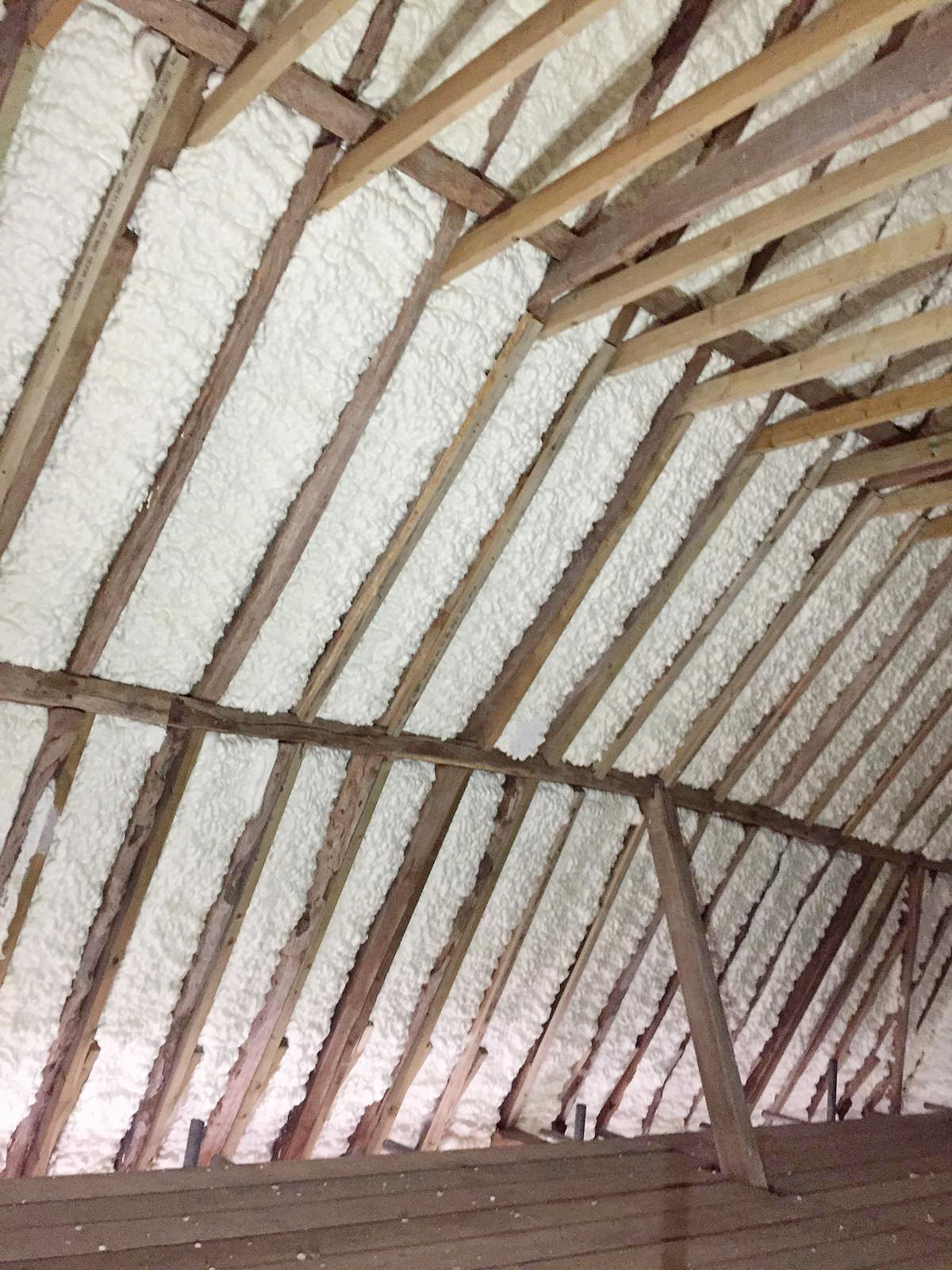
Spray foam insulation is often used under roofs. Here, Icynene spray foam has been used in a listed barn conversion
Petrochemical insulation materials
Widely used in modern buildings, most petrochemical insulation materials are not breathable but have the advantage of providing high levels of thermal insulation relative to their thickness, so may be useful where breathability is not critical.
- Expanded polystyrene (EPS) and extruded polystyrene (XPS) are available as board products. EPS is also supplied as a blown product in bead form. XPS is the stronger of the two and is suited to use below ground.
- Polyurethane (PUR), polyisocyanurate (PIR) and phenolic foam are rigid board materials, faced on both sides with foil to provide strength and improve thermal performance. The foam’s closed-cell structure resists moisture. Phenolic foam offers the best thermal performance.
- Polyurethane (PU) spray foam is often sprayed by contractors under roofs to provide thermal insulation. Be aware that some foams can trap moisture and prevent the reuse of roofing materials. Small handheld aerosol cans are sold for gap sealing and low expansion grades can be useful for filling small openings, and helping with draughts.
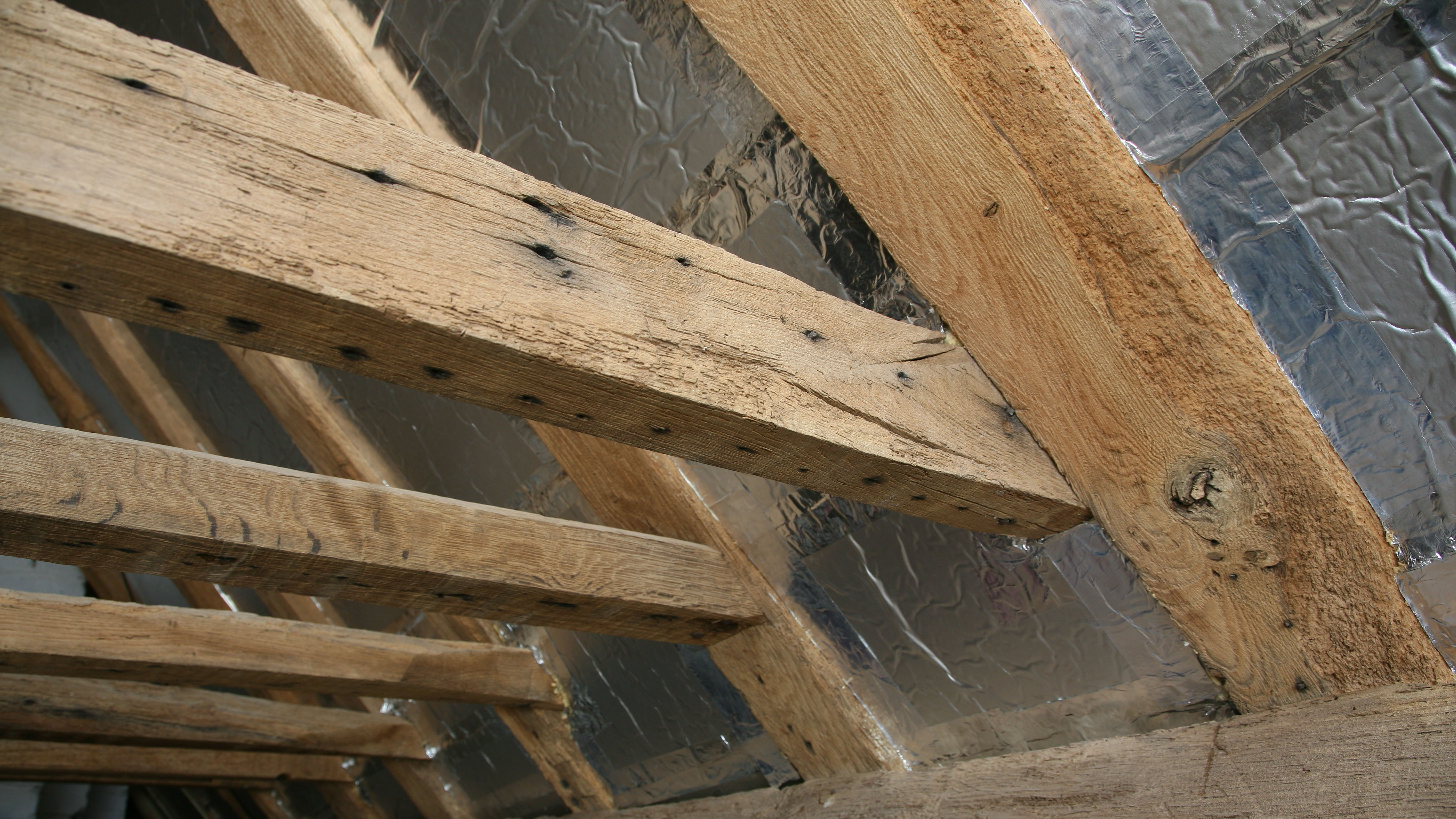
When using rigid insulation boards, it's important to seal any gaps
Foil insulation
Made up of various elements, foils are designed to provide specialised solutions.
- Multi-foils are multi-layered reflective films sewn with foams to form thin, lightweight blankets. Sometimes used under roof tiles and slates, they may require supplementary insulation with other materials.
Why is breathable insulation important?
Old houses are different from those built after around 1919 because they generally have a breathable structure with solid walls that use mortars, renders and plasters of lime or earth. As long as the breathable nature of the building is maintained it will remain in equilibrium, so moisture-related problems are usually avoided.
At its simplest breathability is about the ease with which water vapour can pass through the building’s fabric. It is also to do with liquid water diffusion and capillarity – the process by which liquid water is drawn into a permeable material through open cells. Open-cell materials have interlinking cells or pores so are able to diffuse liquid water and water vapour.
Another aspect of breathability is a material’s ability to buffer moisture, a process sometimes referred to as hygroscopicity. An insulation product that easily absorbs excess water vapour as the relative humidity in a room rises, and then releases it as it falls, will help create a more stable internal environment.
Avoiding overheating
Some insulation materials, such as wood fibreboard, help cut overheating in attic rooms and other areas as they delay the time taken by the heat from the sun to pass through the building envelope, a process known as decrement delay.
Thermal bridging
Any part of the building that acts as a thermal conductor is known as a thermal bridge. With the installation of insulation, any thermal bridges become more pronounced and tend to be a focus for the formation of condensation, so areas such as window reveals must not be forgotten.
Screws penetrating insulation materials will also allow heat to bypass the insulation so special ‘thermally broken’ fixings are generally used.
Safety issues
Some insulation products can cause severe irritation to the skin, eyes and respiratory tract and, depending on the material, face masks, gloves and protective clothing may be necessary.
Although natural insulation options are generally pleasant to handle, always wear a face mask in enclosed spaces such as lofts, especially where dust and previously installed insulation and other potentially hazardous materials may be present.
More on insulation
Join our newsletter
Get small space home decor ideas, celeb inspiration, DIY tips and more, straight to your inbox!
-
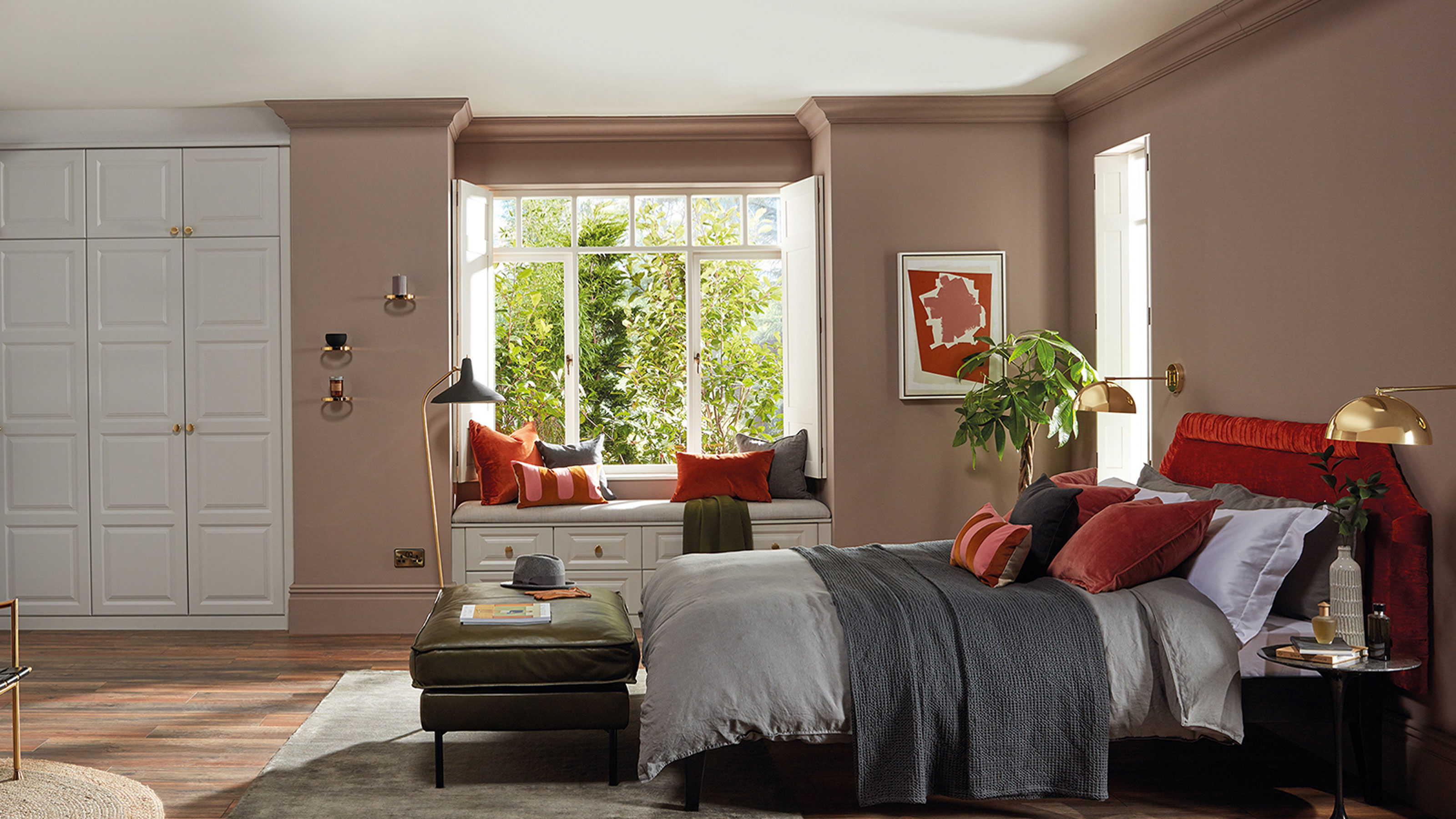 Anthony Carrino reveals $8 product all renters need to help keep their home warm
Anthony Carrino reveals $8 product all renters need to help keep their home warmThe designer known for his HGTV show 'Kitchen Cousins' shares his window insulation tip to keep your home warm
By Millie Hurst
-
 5 ways to stop drafty doors fast — seal air leaks with help from the experts
5 ways to stop drafty doors fast — seal air leaks with help from the expertsLearn how to stop drafty doors if you're feeling a chill. Sealing air leaks is easily done DIY with quick fixes from home experts.
By Anna K. Cottrell
-
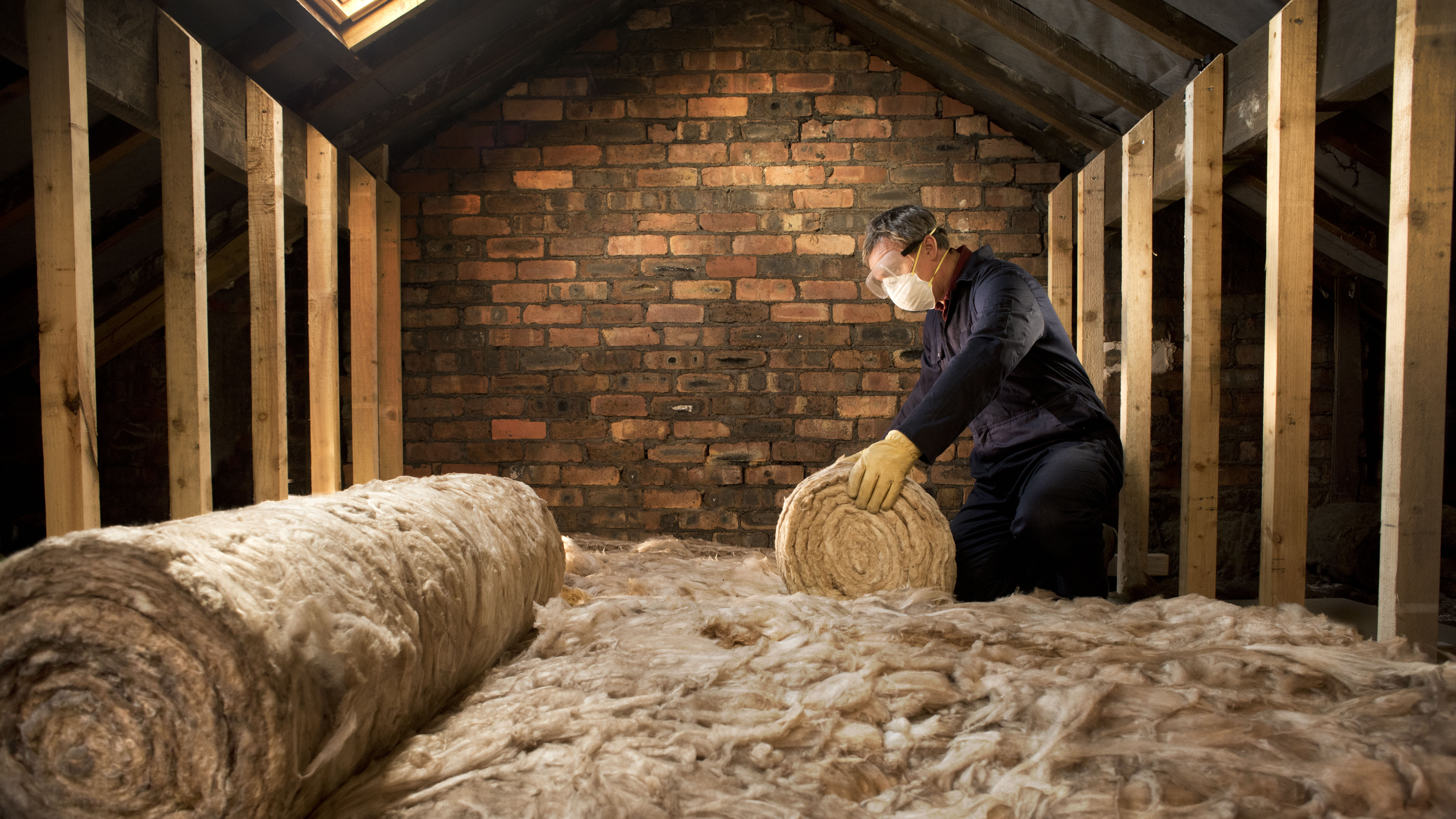 Loft insulation – a guide to lagging a roof or attic room
Loft insulation – a guide to lagging a roof or attic roomGood loft insulation is a must to reduce heat loss and reduce energy bills. This is what you need to know about cold and warm roofs.
By Roger Hunt
-
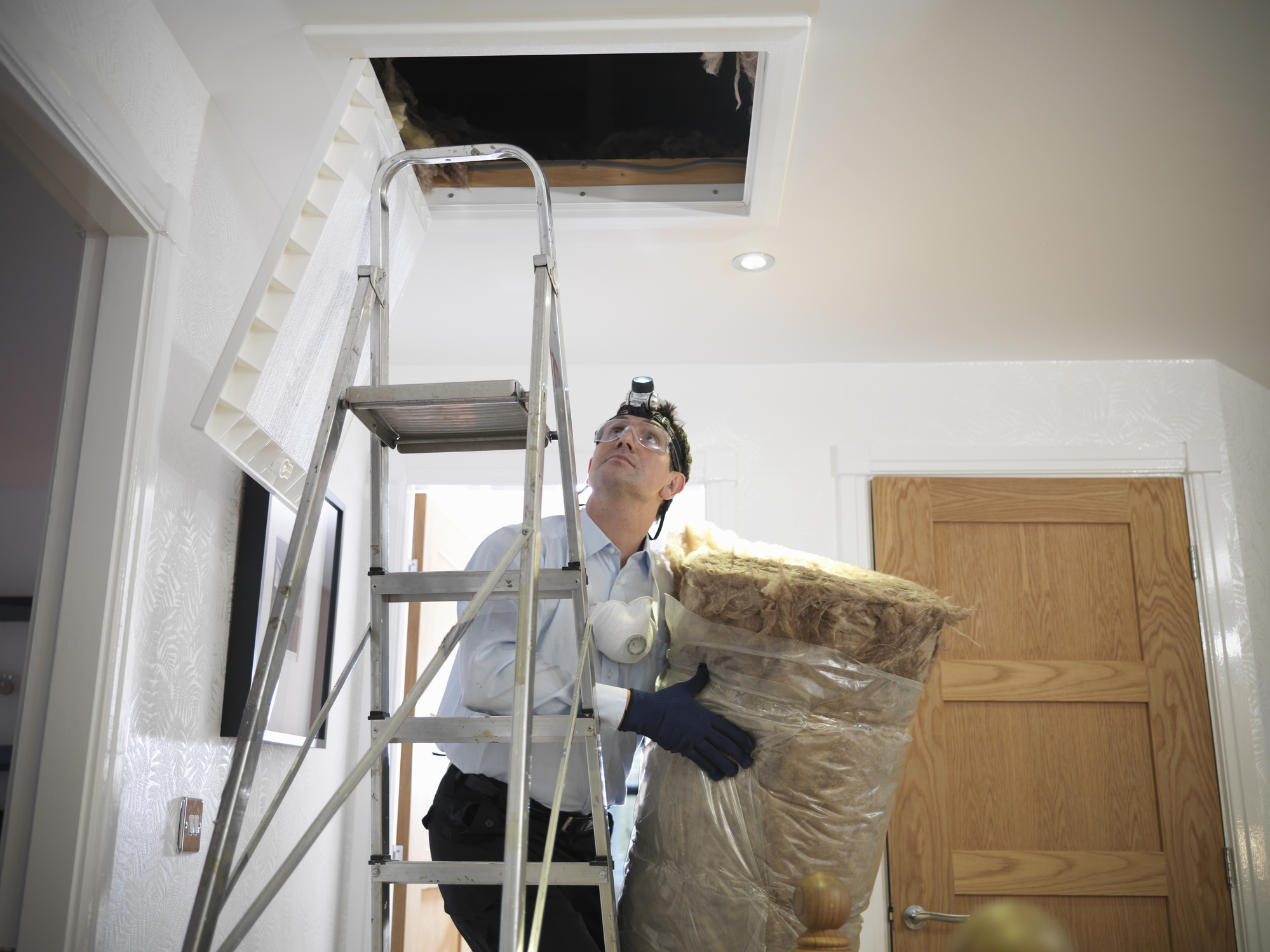 Attic insulation: A guide to types, costs, and how to insulate your attic
Attic insulation: A guide to types, costs, and how to insulate your atticA roofing specialist shares professional guidance for properly insulating your attic
By Carol J. Alexander
-
 Cavity wall insulation: an essential guide
Cavity wall insulation: an essential guideSustainable architectural and interior designer Oliver Heath shares his knowledge on cavity wall insulation and how it could improve your home’s energy efficiency
By Oliver Heath